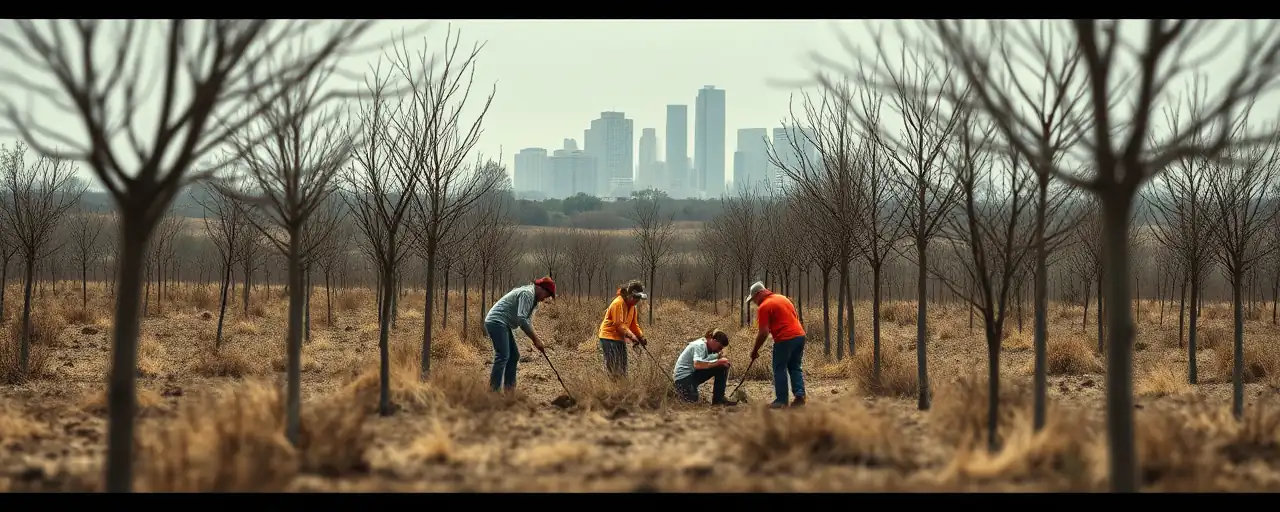A Call to Arms or a Bureaucratic Ploy?
New York’s latest push for park stewardship, branded as Love Our New York Lands, sounds noble at first glance. Governor Kathy Hochul’s team wants volunteers to roll up their sleeves for cleanups, tree plantings, and trail fixes across state parks and canals. It’s pitched as a way to preserve natural beauty and foster community pride. But let’s not kid ourselves. When the state rallies citizens to do its bidding, it’s worth asking: is this genuine grassroots enthusiasm or a cleverly disguised government workaround to stretch budgets and dodge accountability?
Hochul’s plan leans hard on unpaid labor to spruce up public lands, with events like Canal Clean Sweep and I Love My Park Day headlining the effort. The state touts 88 million park visits in 2024 as proof of demand, but that number also screams strain on infrastructure. If parks are so vital, why isn’t Albany prioritizing paid professionals over feel-good volunteer drives? The answer lies in a broader pattern: government loves the optics of community involvement, but it often sidesteps the real work of sustainable funding and maintenance.
The Tree-Planting Mirage
Take the governor’s pledge to plant 25 million trees by 2033. It’s a headline-grabber, no doubt. Who doesn’t want cleaner air and shadier parks? Yet the fine print reveals a tougher truth. Tree planting on this scale isn’t a walk in the park. Nurseries like Maryland’s Ayton State Tree Nursery faced seed shortages in 2024, and New York’s own Colonel William F. Fox Memorial Saratoga Tree Nursery can only supply 2,500 seedlings for this year’s volunteer events. That’s a drop in the bucket. Historical efforts, like the Civilian Conservation Corps, succeeded because of massive federal backing and clear logistics, not just goodwill. Today’s scattershot approach risks wasting time and saplings.
Then there’s the land-use dilemma. Broadleaf trees soak up carbon, but planting them could eat into farmland, hitting New York’s already struggling farmers. The state’s Tree Tracker Dashboard might let volunteers feel good about their contributions, but it doesn’t address seedling mortality or the need for long-term care. Critics of these initiatives, often dismissed as naysayers, point out that flashy goals without robust supply chains or funding are more about public relations than progress. They’re not wrong.
Parks Pay Off, But at What Cost?
State parks are economic engines, no question. Washington State’s parks generate $1.6 billion annually, and New York’s likely match or exceed that. Visitors pump money into local diners, gas stations, and hotels. But here’s the catch: 88 million visits in 2024 didn’t just bring dollars; they brought wear and tear. Roads, bridges, and restrooms are crumbling under the pressure, with national parks alone facing $23 billion in deferred maintenance. Hochul’s $300 million for park upgrades is a start, but it’s dwarfed by the need. Volunteers can pick up trash, but they can’t rebuild wastewater systems or expand parking lots.
The state’s answer? More volunteerism. Programs like the Nooksack River Stewards show that engaged citizens can boost conservation, educating thousands while cleaning rivers. But leaning on unpaid workers to offset infrastructure failures smells like a cop-out. If Albany truly valued its parks, it would invest in skilled labor and modern systems, not just rally locals to sweep canals. Supporters of Hochul’s plan argue it builds community ties, but that warm fuzziness fades when you’re stuck in a park with overflowing trash cans and no ranger in sight.
Stewardship or State Control?
Love Our New York Lands pushes “Leave No Trace” principles, urging visitors to respect trails and wildlife. Fair enough. But the campaign’s tone, backed by agencies like the Department of Environmental Conservation, feels like a lecture from on high. Responsible recreation doesn’t need a state-sponsored sermon; most New Yorkers already know to clean up after themselves. The real issue isn’t rogue hikers—it’s the state’s failure to manage skyrocketing visitation. Yellowstone’s adjusted garbage routes and added staff to handle crowds, yet New York seems content to guilt-trip volunteers into filling the gaps.
Historical programs like the Outdoor Recreation Resources Review Commission in the 1950s worked because they paired federal grants with local action, not top-down mandates. Today’s state-led initiatives, like Hochul’s Unplug and Play, throw millions at community centers and pools while parks limp along. If the goal is outdoor access, why not cut red tape for private land trusts or local businesses to maintain trails? Instead, Albany’s doubling down on centralized control, wrapping it in green rhetoric.
A Better Path Forward
New York’s parks and forests are treasures, no one disputes that. But dressing up government shortcomings as a call for volunteerism doesn’t cut it. The state needs to get serious about funding skilled workers, modernizing infrastructure, and streamlining tree-planting logistics. Private partnerships, like those that fueled the Land and Water Conservation Fund, could ease the burden without leaning on unpaid labor. Citizens want to help, but they shouldn’t be a crutch for Albany’s budget woes.
Hochul’s vision of a greener New York is appealing, but it’s built on shaky ground. Real stewardship means investing in systems that last, not chasing photo-ops with shovels and saplings. New Yorkers deserve parks that thrive because of smart policy, not just sweat equity. Until the state steps up, these volunteer drives will remain a well-meaning distraction from the deeper fixes we need.
